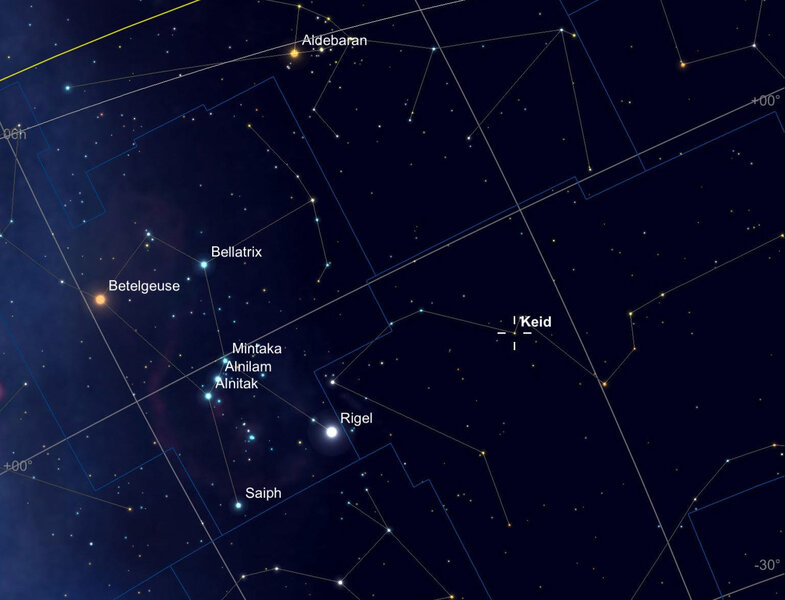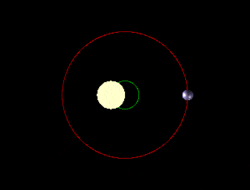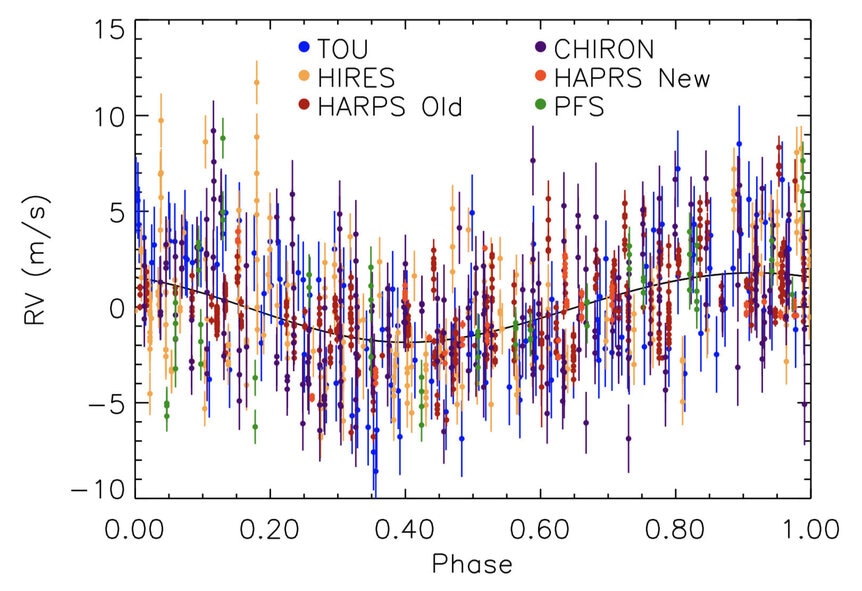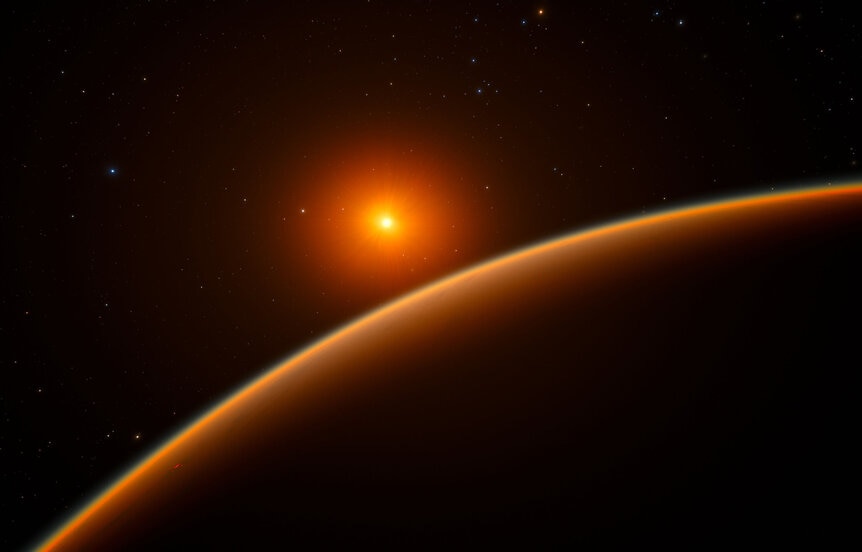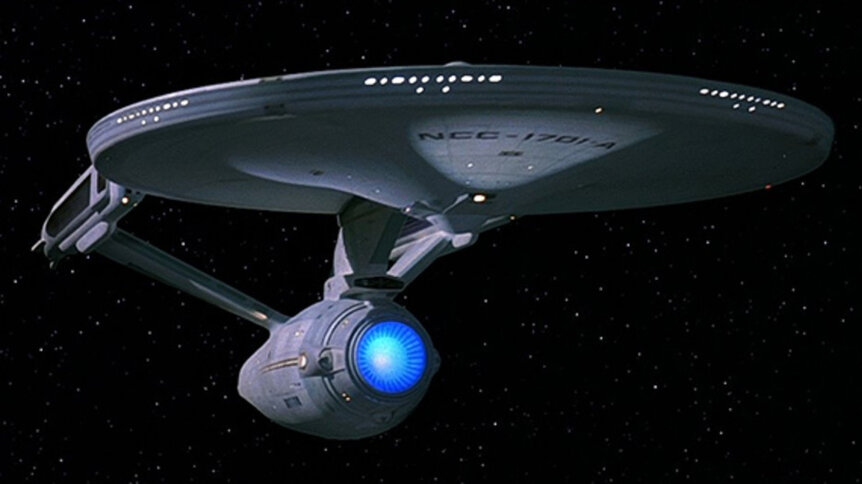Create a free profile to get unlimited access to exclusive videos, sweepstakes, and more!
Exoplanet News: Astronomers have found Vulcan!

“To explore strange, new worlds…”
I’ve been hoping for this news for a long, long time: Astronomers have found a planet orbiting the star 40 Eridani A. The planet looks to be a super-Earth, bigger and more massive than Earth, but still possibly terrestrial (that is, a metal/rock body like Earth as opposed to a gas giant like Neptune or Jupiter).
Why is this a big deal? Because 40 Eridani A is, canonically, the star around which the planet Vulcan orbits. Yes, Vulcan: Spock’s home world in Star Trek!
As an astronomer and a bona fide Trek nerd, my heart is singing with glee.
The star system 40 Eri is about 16.4 light years from Earth, making it one of the closest stars in the sky. It’s actually a triple star: The brightest or primary star is 40 Eri A, and is a star like the Sun, though smaller and cooler (for technical nerds, it’s a K0.5V star, so an orange dwarf). Still, due to its proximity, it’s easily visible to the naked eye from a dark site, shining at magnitude 4.4. It has the proper name Keid, and I’ll use that from here on out to avoid confusion with the other stars.
It’s orbited pretty far out by a binary pair, one of which is a red dwarf (much smaller, cooler, and dimmer than the Sun) and the other a white dwarf — what was once a star like the Sun but ran out of fuel, puffed up into a red giant, lost its outer layers, and essentially died, leaving behind the glowing dense core of the star. The white dwarf is called 40 Eri B and the red dwarf 40 Eri C. They orbit each other every 250 years or so. They lie about 60 billion kilometers from Keid, and take about 8,000 years to orbit it.
So how was the planet orbiting Keid found? Astronomers with the Dharma Planet Survey are intensely scrutinizing about 150 nearby stars that are like the Sun in size and temperature (again, for the nerds: F through M stars) to look for planets orbiting close in to their host stars. Unlike observatories like Kepler and TESS that look for transits of exoplanets, the DPS is looking for the gravitational signature of planets.
A planet orbits a star due to the star’s gravity. But a planet has gravity too! It may be much smaller than the star’s, but it’s there. So in reality the star and planet both orbit their center of mass, called the barycenter. In general we can’t physically see that motion of the star, since the circle is very teeny and the star very far away.
But we can still detect it. As the star makes its orbit around the barycenter, it is sometimes moving toward us and sometimes away, so we see a Doppler shift in its spectrum. The size of this shift depends on the mass of the planet (which determines its gravitational effect on the star), and the time it takes the star to make one orbit is the period (the year) of the planet.
These measurements are fiendishly difficult to make, and require incredible precision. They also require “high cadence”; that is, a lot of measurements made very often. The DPS is doing that, looking at it target stars every night for at least 30 clear nights in a row, and then at least 70 more observations over the next 420 days. This provides more than enough data to look for planets on tight orbits.
And this is where things get fun. The DPS astronomers found a clear 42.4 day signal in Keid’s motion. This indicates the star is orbited by a planet (which would be called Keid b, or 40 Eri Ab… or, y’know, Vulcan) with a mass of about 8.4 times Earth’s (at a minimum; it could be more). This puts it almost exactly between Earth and Neptune in mass — Neptune’s mass is 17 times Earth’s. This makes it either what we call a super-Earth or a mini-Neptune.
So is it a rocky world like ours or a gas giant? That’s not possible to tell right now, unfortunately. What we need is its density (how much mass is crammed into its volume), which means we need to know how big it is, and that’s not possible to determine with the current observations.
That’s important. For example, Earth is mostly metal (like iron and nickel) and rock. The overall density is about 5.5 times that of water (or 5.5 grams per cubic centimeter). Neptune is mostly gas, and has a density of only 1.6. So pretty obviously, getting this planet’s density would tell us a lot about it. The density could be found if it transits Keid, blocking a bit of the star’s light. That telltale dip would give us the diameter of the planet, and therefore its volume. But these DPS observations don’t tell us if it transits or not.
The good news? TESS is an orbiting NASA observatory dedicated to looking for exoplanet transits, and Keid is in its list of targets! From what I can see TESS will be pointed in Keid’s direction starting in November of 2018, so we may find out more about this planet in early 2019.
That’s exciting! If it does transit, then we get its diameter (assuming TESS can see such a small dip in the star’s light). If it has the same density as Earth, then it would have to be about twice Earth’s diameter to get a mass of 8.4 times ours. In that case, the surface gravity would be about twice ours too. That means you’d weigh twice as much on the planet as you do on Earth.
Huh. In Trek it’s known that Vulcan is a high-gravity world (which is why Spock is stronger than humans). It’s also known to be hot there, and this planet, if it exists, is close enough to its star to be much warmer than Earth (maybe too warm; it’s actually near the inner edge of the star’s habitable zone). Also, interestingly, the star is probably about 7 billion years old so, older than our Sun (at 4.6 billion), so plenty of time for life to get started there (presumably by the Progenitors) and to evolve.
Now I have to throw in some caveats. Besides the idea that this might be more like Neptune than Earth, it’s not 100% certain the planet even exists. It turns out the star itself rotates once every 40 or so days. That’s very close to the period detected for the planet’s orbit, which is a little suspicious. Like the Sun, Keid has a magnetic cycle (it lasts about 10 years, close to the Sun’s 11-year cycle too), so it has sunspots (well, starspots) on it. As the star rotates that could mimic the signal seen by DPS.
The astronomers did everything they could to make sure this was a planet and not some activity on the star’s surface, and to be honest I think they did a good job. It’s far more likely to be a planet than a bunch of starspots, but we can’t be 100% sure. So it’s best to keep that in mind*.
Still, it’s bad enough Vulcan was destroyed in the J.J. Abrams reboot of Trek in 2009. Having it never have existed at all would be worse.
But, all in all, this is pretty cool news. And mind you, there could be other planets orbiting the star, and one as small as Earth and orbiting farther out (and therefore a bit more clement) wouldn’t be detected easily in this survey.
We’re just getting started finding these strange new worlds. Our methods and technology get better all the time. This new discovery makes me hopeful that we’ll boldly find planets no one has found before.
P.S. I have to add, the lead author on the paper is named Bo Ma, a postdoctoral researcher at the University of Florida. As it happens, Samual Boma was a character in Star Trek, appearing in the original series episode "The Galileo Seven." He was an astrophysicist (!), and one of the big sources of conflict in that episode was that he vehemently disagreed with many of Spock's command decisions. That makes me so happy. As I told you: I'm a huge Trek nerd.
* It’s worth noting that this same signal was seen in data from another observatory as well, but the authors note they couldn’t distinguish it from magnetic activity in the star at the time. The DPS data allows for more in-depth analysis of this.
